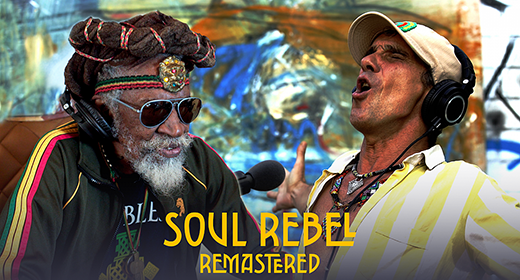by Carolyn Gregoire: The embrace of Eastern philosophy and mysticism in the West has a long history,

from the writings of “the first American yogi” Henry David Thoreau, to the Beatles’ famous 1968 pilgrimage to India to the current scientific interest in ancient contemplative practices like meditation and yoga.
The dissemination of Indian ideas and practices has shaped the way we view spirituality in the West. But ancient Indian ideas have also influenced a more unlikely domain — modern science, medicine and psychotherapy.
As scientific interest in the inner experience of the individual has grown, we seem to be witnessing a meeting of the minds between Western science and Eastern spirituality. Scientific American featured meditation on its November cover, while the Dalai Lama is working with neuroscientists to study the dimensions of consciousness.
In many ways, modern science is just catching up with the wisdom of early Indian teachings, rooted in ancient Vedic texts and still pervasive in the culture of the Indian subcontinent. Today, many concepts in early Vedic philosophy have been backed up with empirical evidence. As the French Nobel laureate Romain Rolland put it, “Religious faith in the case of the Hindus has never been allowed to run counter to scientific laws.”
A close cooperation between Western scientists and Eastern contemplative traditions like Buddhism (which also stems from the Vedas) can “truly contribute toward expanding the human understanding of the complex world of inner subjective experience that we call the mind,” the Dalai Lama said in 2005.
In honor of the launch of HuffPost India, here are five pieces of ancient Indian wisdom now backed by modern science.
Yoga can heal the mind and body.

Yoga, the ancient Indian mind-body practice, has become a $27 billion dollar industry in the U.S. While Western yoga bears only a partial resemblance to the traditional Indian meditative practice and school of philosophy, yoga is arguably the most widespread and influential Eastern spiritual practice to spread outside the Indian subcontinent. In the West, we tend to use the term yoga to refer solely to the physical postures, or asana, while traditionally, the physical aspect of yoga is just one small part of the practice that was meant to prepare the body for long periods of meditation.
Created for the purpose of stilling the mind and achieving eventual oneness with the divine, yoga (which means “unity” in Sanskrit) has long been believed to bring health to the mind, body and spirit.
“Health is a state of complete harmony of the body, mind and spirit,” said B.K.S. Iyengar, the famous Indian yoga master. “When one is free from physical disabilities and mental distractions, the gates of the soul open.”
While evidence of the positive spiritual benefits of yoga remains mostly anecdotal, a growing body of research has linked an asana-based yoga practice with a slew of positive physical and mental health impacts. Yoga has been found to lessen symptoms of depression and anxiety, ease chronic back pain, lower stress levels, boost brain function and improve heart health.
Scientists now know why. Almost immediately upon starting a practice, yoga’s positive impact extends all the way down to the cellular level, affecting gene expression in immune cells, according to a 2013 Norwegian study. The beneficial changes may lead to boosts in immunity and reduced inflammation.
“There are rapid (within two hours of start of practice) and significant gene expression changes… during a comprehensive yoga program,” the research team wrote in the study. “These data suggest that previously reported effects of yoga practices have an integral physiological component at the molecular level which is initiated immediately during practice and may form the basis for the long-term stable effects.”
Breathing affects our health and well-being.

According to the 15th century yoga manual Hatha Yoga Pradipika, one must learn to control the breath in order to achieve good health, longevity and peace of mind. The yogic practice of breath work known as pranayama — which is Sanskrit for “extension of the life-force” — has been used for centuries as a means of healing the mind and body.
“When the breath wanders the mind also is unsteady,” the Pradipika reads. “But when the breath is calmed the mind too will be still, and the yogi achieves long life.”
The way we breathe can have a significant impact on our well-being and stress levels, and can even create physical changes in the body, including lowering blood pressure levels. Practicing controlled breathing during meditation can increase the size of the brain, boosting cortical thickness, according to a 2005 Harvard study. Among musicians, 30 minutes of deep breathing can reduce performance anxiety, whilethird-grade students who practice deep breathing before an exam experience less anxiety and self-doubt, as well as heightened concentration. Practicing deep breathing can also lower blood pressure, according to Dr. David Anderson of the National Institutes of Health.
“We take our breath for granted the way we take our heart beat for granted,” Carla Ardito, a breathing expert at the Integral Yoga Institute, told The Huffington Post last year. “The difference is we can work on our breathing.”
Turmeric really is a miracle cure.

Much of the delicious, spicy scent of traditional Indian cooking and vibrant yellow color comes from turmeric, a flavorful spice and powerful anti-inflammatory agent. The use of turmeric in the Vedic tradition dates back at least 4,000 years. Historically, turmeric was used not only as a seasoning element, but also played a role in religious ceremonies and was used medicinally within the ayurveda (“science of life”) holistic health tradition.
Modern nutritional science has confirmed that turmeric does have powerful healing properties. Clinical trials have found turmeric to ward off indigestion and heartburn,lower risk of heart attack, repair stem cells in the brain, and possibly even fight off cancer cells.
It may be particularly beneficial for an aging population. According to recent research, adding just a gram of turmeric to breakfast can help to improve the memory of those at risk for cognitive impairment.
Meditation does lead to a sort of enlightenment.

According to ancient yogic texts, years (or lifetimes) of practicing meditation can lead to eventual enlightenment, or union with the divine. When the fluctuations of the mind are completely stilled, one is free to experience the true Self — the divine soul.
Whether or not meditation is a path to the direct realization of God is, of course, difficult to prove. But modern science has shown that regular meditation can enlighten the mind in a number of ways.
Stilling the mind through a meditation practice leads to actual changes in the brain — mindfulness training has been found to boost neuroplasticity, and even to physicallyrebuild the brain’s gray matter. An eight-week course of meditation shrinks the amygdala — the brain’s fight or flight center — and thickens the prefrontal cortex, an area associated with awareness, concentration and decision-making.
This can have a powerful physical and psychological effect. Mindfulness decreases stress by lowering levels of the stress hormone cortisol in the body. Meditation is also a powerful way to combat mental health issues: A group meditation training was recently found to be just as effective as a traditional course of individual Cognitive Behavioral Therapy in lessening symptoms of anxiety and depression.
Among highly experienced meditators, incredible feats of mind have been documented. One study found that years of meditation can create changes in the brain neural networks that break down the perceptual and psychological barrier of self/other, causing the meditator to experience a sense of total harmony between themselves and the world around them. Normally, the brain switches between the extrinsic network (used when we focus on things outside of ourselves) and the intrinsic network, which involves self-reflection, emotion and self-referential thought. Rarely do these networks act together. But brain scanning studies revealed that some monks and experienced meditators are able to keep both networks active at the same time during meditation, allowing them to feel a literal sense of oneness.
“Meditation is not just blissing out under a mango tree,” French Buddhist monk Mattheiu Ricard, “but it completely changes your brain and therefore changes what you are.”
Everything really may be interconnected.

We might think of physics and spirituality as being completely antithetic to one another, but recently, some research in theoretical and quantum physics has lent scientific support to the basic tenets of Eastern mysticism. Austrian physicist and bestselling author Fritjof Capra writes, “physics leads us today to a world view which is essentially mystical.”
Here’s the short story: According to Eastern metaphysics, everything in the universe is interconnected, and consciousness pervades all matter, while the view most commonly held in Western science suggests that consciousness only occurs in humans as a byproduct of physical changes in the brain. But some research in quantum physics now supports the Eastern view that perhaps mental states do not rely exclusively on material states, and therefore consciousness may exist separately from any sort of changes occurring in the physical brain. In other words, there can benon-local connections between physical and mental phenomena — even matter that appears to be separate may, in some way, be connected.
“Quantum theory… reveals a basic oneness of the universe,” Capra writes in The Tao of Physics. “It shows that we cannot decompose the world into independently existing smallest units. As we penetrate into matter, nature does not show us any isolated ‘building blocks,’ but rather appears as a complicated web of relations between the various parts of the whole. These relations always include the observer in an essential way. The human observer constitutes the final link in the chain of observational processes, and the properties of any atomic object can be understood only in terms of the object’s interaction with the observer.”
Noted theoretical physicist David Bohm, too, came to the conclusion that there is an underlying unity to the elements that, to our limited perception, appear to be separate.
“Mind and matter are not separate substances,” Bohm wrote in The Undivided Universe. “Rather, they are different aspects of our whole and unbroken movement.”









































